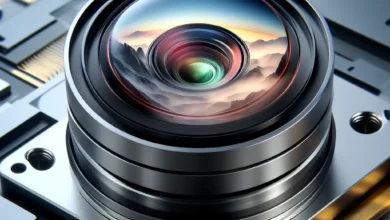GIF image upscaling
GIF (Graphics Interchange Format) images are widely used on the internet due to their small file sizes and support for animation. However, one of the main limitations of GIFs is their low resolution, which can result in pixelation and loss of detail when enlarged. Upscaling GIF images, i.e., increasing their dimensions while preserving quality, is a challenging task that requires careful consideration of various factors. In this article, we will explore the techniques and challenges involved in GIF image upscaling.
Upscaling an image involves increasing its dimensions, which essentially means adding more pixels to the original image. The most straightforward approach to upscaling a GIF is using traditional interpolation methods like bilinear or bicubic. These techniques calculate new pixel values based on the surrounding pixels, but they often result in blurry and soft edges, especially for GIFs with complex patterns and fine details. For Gif image upscaling use AI GIF upscaler.
Recently, deep learning-based methods, particularly Convolutional Neural Networks (CNNs), have shown promising results in image upscaling. These models learn intricate patterns and textures from a large dataset of high-resolution images and can generate more realistic and detailed upscaled versions of low-resolution images, including GIFs. The advantage of using CNNs is that they can capture the global and local context of an image, allowing them to produce visually pleasing results for upscaling. Visit https://overscale.imagewith.ai/blog/the-best-gif-image-upscaler-with-ai
However, there are several challenges in upscaling GIF images using deep learning models. The first challenge is the computational cost. GIFs are often short animations, and each frame needs to be upscaled independently. The process can be computationally intensive and time-consuming, especially for large GIFs or when dealing with real-time applications.
Another challenge is the preservation of temporal coherency. GIFs are meant to be viewed as animated sequences, and any discrepancies in the upscaled frames can lead to jitters or visual artifacts. Ensuring smooth transitions and maintaining the essence of the original animation while upscaling each frame is crucial to maintaining the overall quality of the GIF.
Furthermore, upscaling GIFs can lead to increased file sizes. GIFs are known for their small file sizes, and upscaling may cause them to lose their efficiency in terms of data compression. Balancing the trade-off between improved visual quality and the file size is essential to ensure a smooth user experience when sharing or displaying these upscaled GIFs.
Lastly, copyright and ownership issues can arise when upscaling GIFs. If the original GIF is copyrighted or not owned by the upscaling entity, using deep learning models to upscale and redistribute the GIFs without proper permissions can lead to legal consequences.
In conclusion, GIF image upscaling is a complex task that requires a delicate balance between visual quality, computational resources, and legal considerations. While deep learning-based methods offer promising results in improving GIF resolution, addressing challenges related to computational costs, temporal coherency, file sizes, and copyright issues is essential to make GIF upscaling a practical and responsible tool in the digital landscape. As technology advances and research progresses, we can expect more efficient and sophisticated solutions for upscaling GIF images in the future.



